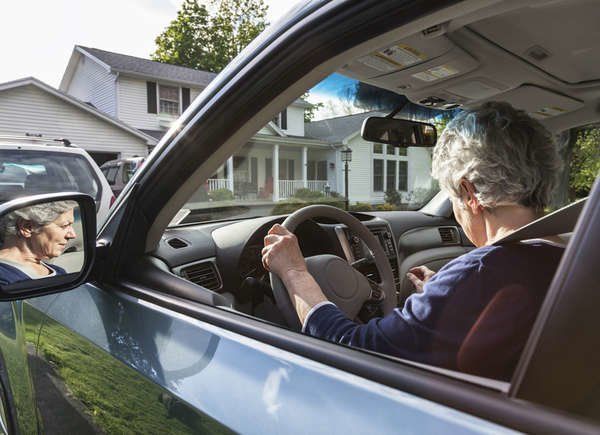
Many things can cause battery drain. Your car’s battery could become depleted if it is parked too long. All vehicles are affected, regardless of whether they’re electric, diesel, or hybrid. Many car features are still active even when you’re not driving it. These include the security alarm system, onboard computer, clock, power door locks, power windows, and pre-sets such as seat positions, radio, and climate control settings. These functions drain the battery as they use electricity. The daily power loss may be minimal, but the battery discharge amount can be substantial if you leave your car unattended for a prolonged period. If the battery is not charged, it will eventually discharge completely.
You did not turn off your car properly
You may be losing power quickly because you must remember to turn off your vehicle correctly. You may have left your interior or headlights on or not closed the boot or door.
Many cars require manual action to turn off the lights if left on too long. Some vehicles will send an alert beep or shut them down automatically, but others may do it for you. Your car’s battery life could be reduced if you don’t turn it off entirely regularly. Before you leave your vehicle, make sure that all lights and doors are turned off.
Parasitic Drain
When your battery drains faster than usual, it’s called a parasitic drain.
It’s usually a defective accessory draining the battery – for instance, an interior light or sensor that doesn’t turn off automatically. The addition will continue to consume power until you manually switch it off. Other faulty electrical accessories include a damaged relay switch, a computer module, headlights or boot lights, and alarms. A mechanic can diagnose a parasitic drain by using a parasitic current test.
A defective alternator
The alternator is a device that recharges your vehicle’s battery whenever you put it in gear. It also provides power for your car accessories.
You may notice that your car is experiencing problems if the diode in your alternator becomes defective. The alternator will cause the battery to drain and eventually fail when trying to start the vehicle. You’ll need to do the following: jumpstart your car. This will give your vehicle enough power to get to the workshop.
A battery that is old and worn out
As you drive your car, its battery can begin to cause problems. If your car’s old battery is worn out, you may see corrosion or decreased performance.
You may need to replace your battery if you notice these signs. This can be confirmed by having the battery checked out by a professional. The battery will die even if you jumpstart the car. The average battery age is five years. However, it depends on many factors, such as the amount of use, weather conditions, and the strain on the battery.
Take frequent short trips
When a car is started, the battery provides a burst of power. The alternator will recharge the battery once your vehicle has been created and is running.
When you make a short journey, your alternator might not have enough time to recharge the battery again. Short trips are damaging to your battery.
Batteries with corroded terminals or loose cables
The terminals of your car battery are positive and negative, and cables connect them. Disconnecting the cables before performing any car maintenance is a good idea.
Be sure to reconnect them correctly. Most batteries will have plus and minus symbols on the terminals. The convention is that a black cable (or connector) is for the negative and a red one for the positive. Disconnect the negative cable before connecting any positive wires. The battery will discharge if these cables are loose. Flickering lights, trouble starting the vehicle, and a thread with hot earth are all signs of flexible wires. You can fix this by tightening and reinstalling the cables correctly. However, you should always be aware of safety precautions when working with car electrical systems. This is to prevent shocks or damage to the vehicle. In case you have any doubts, seek professional assistance. Another reason your battery is not performing well could be corrosion around the terminals. After removing the battery, clean the terminals using a mixture of baking soda and water, then apply petroleum jelly before reconnecting the cables.
Extreme temperatures
Temperatures that are too hot or too cold can negatively affect the performance of your battery. Temperature affects chemical reactions in the storm. This can have an impact on the battery’s strength and efficiency.
Your car may need to be started with twice the power in winter. Your battery’s liquids may evaporate in summer. This can cause corrosion and increase the chances of battery failure.
Keep Driving
Driving your car every few days will allow the alternator to do its work and prevent your battery from being completely discharged. Regular driving also keeps your engine lubricated and reduces flat tire spots by reducing strain.
Avoid short trips
Short trips are a strain on your battery. You can avoid this by using your car for extended periods.
If you don’t drive your car very often or on long trips, an external battery charger can help maintain the voltage.
Regularly check the battery
Lift the bonnet of your car and check for signs of wear. You can also hire a professional to do this.
When checking your battery, make sure: * It is securely fastened * The top of the battery should be clean and free of dust and grime. * The terminals should not be corroded. * The voltage on the voltmeter should reach 12.7 volts.
Warning signs
The battery symbol on your dashboard will usually illuminate if it is low.
Other signs of a battery not functioning correctly are: * Your vehicle starts to make unusual noises. * The dashboard lights dim. * The car accessories don’t work. * You hear an audible click when you turn on the ignition. * If you notice any of these signs, inspect your vehicle immediately or have it checked by a technician before it deteriorates.

















